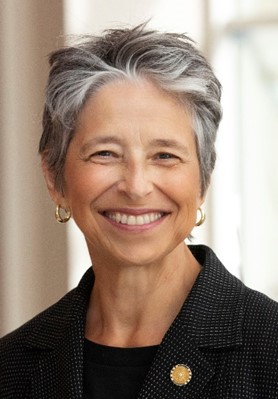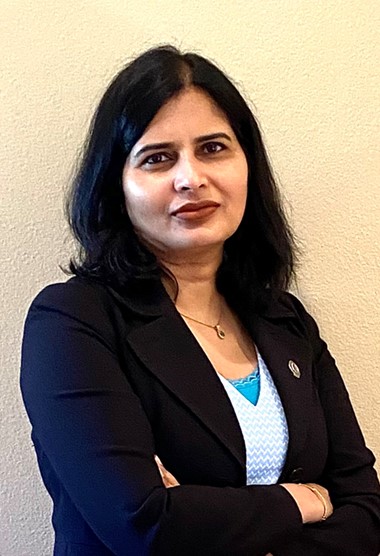Leadership, Mid-Career Humps, Burnout: Q&A With Pamela Douglas, MD, MACC

Pamela Douglas, MD, MACC, is the Ursula Geller Professor of Research in Cardiovascular Diseases in the Department of Medicine at Duke University and a faculty member of the Duke Clinical Research Institute. She has served as ACC President, ASE President, and Chief of Cardiology at both University of Wisconsin and Duke University. This piece focuses on her leadership path, especially within the societies, her engagement with the ACC and her term as ACC president, as well as her advice for other cardiologists, particularly women at various stages of their careers.
Can you elaborate on your leadership journey?
I first became involved with the ACC through the Early Career Section. I joined the Early Career Awards Committee, as well as other committees. I then continued onto the ACC and ASE Board of Directors around the same time when I realized how much I could contribute. I was able to show up in the larger sense of the word, have expertise, express thoughts, and contribute effectively, which was appreciated and recognized at both societies. I was ASE president from 2001 to 2003 and then ACC president from 2005 to 2006. I enjoyed being part of the deliberations and developed great professional and personal connections.
I also want to emphasize the importance of committed and supportive colleagues. It is important to find colleagues who are supportive of you and vice versa. It isn’t just hard work, but it is also networking and collaborative approach with a peer group that moves you forward.
What were the things you enjoyed in your roles as the ASE and ACC President?
A job well done is most rewarding to me, as is being able to provide appropriate stewardship. I was able to reorganize the ASE structure and committee structures, create mission areas of education, quality and advocacy, and delegate authority to these groups. The organization grew very well and very quickly. At the ACC, I am also very proud of the work we did to enhance quality of imaging. A couple of the main things are the appropriate use criteria, developing collaborative relationships between radiology and cardiology, and creating the opportunity for collaboration which ultimately led to the creation of the SCCT.
What advice do you have for FIT and Early Career members?
It is important to understand that there are so many ways to get involved at the local level, and there are so many societies to get involved with. These are smaller communities and easier to manage. There are also amazing programs across societies. Remember to get your clinical competencies, but also know there is also a lot of professional developmental advice available.
Don’t being afraid to volunteer for work. And if you have a chance, do your best work in a timely way so you can be asked to do it again. We all advanced on shoulders of others, so be generous in sharing compliments with a team. In short: Step up, do a great job and be part of a team.
What suggestions do you have for mid-career cardiologists, particularly women, as part of ACC or in their leadership roles?
Mid-career, particularly for women in cardiology, is a very difficult time. We see in wellness surveys that mid-career women have the brunt of burnout – likely because FITs and early career cardiologists get a lot more attention and are more nurtured. Now, in mid-career, all of that is gone and you have more responsibilities with children, partners and your presence can be a little more challenging to others. When you are competing for the same position or same work, you are seen more as a threat. As women get into their late 50s and 60s, all that gets better. The kids are older, and you are more successful and established.
But there is a real hump in mid-career. So, remember you can’t always do everything every time. Most successful women in cardiology have a period in early and mid-career when they are not trying to be national leaders. It is important to realize that when you see women in their late 50s or 60s, they might not have been leaders earlier on in their careers. So give yourself some space to take care of your home life and then re-prioritize and re-engage in your work life if that is what you want to do. If you want to do everything and accomplish everything all at the same time, then that is okay, but it is not necessary.
Another thing I see in mid-career women is they are becoming more successful and confident of themselves, and they are considered more of a threat than a confident man is. Do you have any suggestions for navigating that?
Be excellent, use humor, and be strategic. There are good books about career and strategic development geared toward women since this is a common issue in other industries too. Professional development is tuned to men who are advised to be more collaborative, but women also need to be more confident and assertive. Women are more hesitant to put themselves forward or take risk. But we should be willing to develop those characteristics. Peer groups at your own institution are very important. Check in with your colleagues. You don’t have to do this alone. Others might need the support too.
We are facing increasing issues with wellness, burnout, increasing physician suicide. Do you have advice for cardiologists facing these challenges?
Many factors contribute to wellness, and personal resilience is a small portion of it. You must recognize there are some things you can do and some things which are beyond your control. Part of it is your work culture. Lack of support at work with advanced practitioners or research can all contribute to burnout.
Solutions are not just personal resilience. There are environmental factors which are beyond your control. It might not just be the amount of work, but the relentlessness of it which can contribute to it. If you can take a short, even 15-minute mental and physical break, it can make a big difference. Cardiology continues to be incredibly vibrant. There is a lot of opportunity and a growing respect for diversity, for women and people of color, and inclusion efforts that wasn’t there even five years ago. The culture is more welcoming. And more people are trying to help others succeed.
I would like to thank Dr. Douglas for the insightful interview. Here are five takeaways:
- Get involved locally and in smaller societies as you try to get involved with the ACC.
- Slow down in your early or mid-career if it will help with your work life balance and prevent burnout.
- Seek out opportunities – and when you get an opportunity, come prepared.
- Remember the importance of collaboration and sharing the credit and success with your team.
- Cardiology continues to be incredibly vibrant. Have fun. Enjoy the journey.
This article was authored by Mahi L. Ashwath, MBBS, MBA, FACC, Iowa ACC Governor and Cardiac MRI Program Director at University of Iowa Hospitals and Clinics, Iowa City, IA.
This content was developed independently from the content developed for ACC.org. This content was not reviewed by the American College of Cardiology (ACC) for medical accuracy and the content is provided on an "as is" basis. Inclusion on ACC.org does not constitute a guarantee or endorsement by the ACC and ACC makes no warranty that the content is accurate, complete or error-free. The content is not a substitute for personalized medical advice and is not intended to be used as the sole basis for making individualized medical or health-related decisions. Statements or opinions expressed in this content reflect the views of the authors and do not reflect the official policy of ACC.


